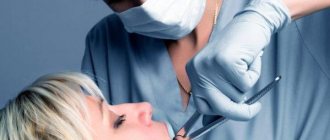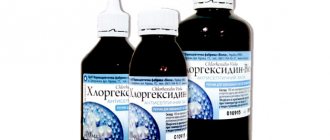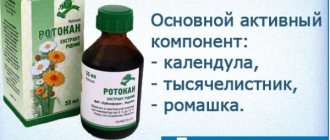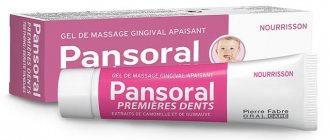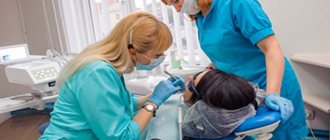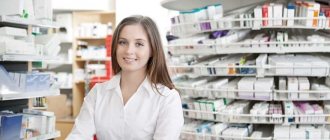Chlorhexidine is an effective antiseptic drug used in traditional medicine. It is used in gynecology, dermatology, and also in dentistry to combat various types of bacteria. Available in solution form, Chlorhexidine is often used for gum inflammation.
How to rinse your mouth with Chlorhexidine for gum inflammation
What is Chlorhexidine used for?
An aqueous solution is prescribed to be taken in the following cases:
- cervical erosion;
- for the prevention of syphilis, genital herpes and other vaginal diseases;
- disinfection of dentures, disinfection of wounds;
- various diseases of the oral cavity.
An alcohol solution is used to treat hands and medical devices before surgery. The solution is also used to treat the working surface of medical equipment.
Vaginal suppositories are effective for the following conditions:
- in order to prevent infections that can be transmitted as a result of unprotected sexual intercourse;
- bacterial vaginosis;
- prevention of inflammation and infections before surgery, childbirth or abortion.
Chemical properties
To better understand what chlorhexidine is, you need to know its chemical properties. It appears to be a white crystalline powder and has a melting point of 137 °C. To make the drug, the powder is diluted in a certain proportion with water or alcohol. The resulting solution is colorless or light yellow.
It has a weak, unexpressed odor or is characterized by its complete absence. The chemical formula is C22H30CL2N10. It is stable, which makes it possible to achieve a normal bactericidal effect when applied to the skin, when rinsing, etc. When mixed with alcohol, the bactericidal and antiviral characteristics of the substance are enhanced.
How to use Chlorhexidine in gynecology
The product is actively used to prevent sexually transmitted diseases. No later than 2 hours after unprotected intercourse, you need to take the solution. Men will need to insert 2 ml into the urinary canal, and women will need to insert 2 ml into the urinary canal and another 5-7 ml into the vagina. It is recommended to wipe the skin around the genitals with the solution. The instructions say that after using the drug you need to wait 2 hours before urinating. Otherwise, the effect of use will be less.
For preventive purposes, vaginal suppositories can be used.
Before using the product for thrush and other gynecological pathologies, you should consult a specialist in advance.
pharmachologic effect
The active substance chlorhexidine destroys the bacterial lash, which leads to its gradual destruction. It is not able to cope with viruses , so dentists do not prescribe it for viral infections, with the exception of herpes.
The product has good resistance to environmental factors. After rinsing, the film remains on the mucous membranes for several hours, which is necessary to treat the disease. It is good if, before rinsing, the patient warms up the liquid a little, as this increases the antiseptic intensity. The effect persists even in a purulent environment and blood admixture.
- The benefits and harms of rinsing the mouth with sunflower oil
The use of chlorhexidine has a beneficial effect on the restoration of the body's protective cells. Chlorhexidine copes with inflammatory processes, reduces hyperemia, swelling, and promotes the regeneration of mucous tissues.
Contraindications and adverse reactions
Taking the drug is contraindicated in the following cases:
- increased susceptibility to the components included in the composition;
- patients with dermatitis;
- simultaneous use with other antiseptics, for example, hydrogen peroxide;
- in ophthalmology for washing the eyes.
It is better to refrain from using the product to disinfect the surgical field before or after surgery on the central nervous system and auditory canal.
In pediatrics, the drug is used with great caution.
Some patients may experience undesirable reactions such as:
- dry skin;
- allergic skin rashes;
- itching of the skin;
- light sensitivity.
With prolonged use of the product in dentistry, changes in taste may occur, tartar may appear, or teeth may become stained.
What to do if the drug is accidentally swallowed?
During the procedure, it is necessary to avoid getting Chlorhexidine into the stomach, but if this happens, there is no need to panic. The need to take any measures depends on the amount of the drug that enters the stomach. If the volume does not exceed one sip, you can do nothing, but at the same time carefully monitor how you feel.
- What medicine is put into the hole after tooth extraction?
If pain or cramping occurs in the abdomen, it is necessary to rinse the stomach with warm soda or saline solution, and then take any sorbent drug, for example:
- "Neosmectin";
- "Smectu";
- "Filtrum-sti";
- Activated carbon;
- "Polysorb".
Activated carbon
The same steps must be performed if the amount of medicine swallowed is more than 10 ml. If you feel unwell, have intestinal or stomach cramps or signs of intoxication, you should consult a doctor.
"Chlorhexidine" is one of the most famous and affordable antiseptics used in dental practice. It allows for disinfection of the oral cavity after surgery and prevents pathogenic bacteria from entering the socket of the extracted tooth. If you use Chlorhexidine according to the regimen prescribed by your doctor, you can avoid serious complications, for example, purulent-infectious lesions of the periosteum or alveolitis. During use, it is important to follow the precautions described in the official instructions for the drug.
Characteristics of the product
"Chlorhexidine" by its nature is a universal antiseptic. It was first synthesized at the beginning of the last century in Great Britain. From then to the present, it has been the leading disinfectant for the external treatment of skin, as well as medical instruments. Widely used in surgical practice. In addition to being an independent drug, it is part of many medications - antiseptic, promoting skin regeneration, etc.
"Chlorhexidine bigluconate" is produced by dozens of Russian enterprises alone. In fact, there is no difference in their products. The product differs only in its concentration. In this format it can be presented in five variations:
- 0,05 %.
- 0,2 %.
- 0,5 %.
- 1 %.
- 5 %.
What do these numbers mean? For example, 100 ml of a “Chlorhexidine” solution of five percent concentration (5%) contains 5 ml of the active substance.
The composition of Chlorhexidine preparations is identical. These are just two elements:
- Purified drinking water.
- Ingredient: chlorhexidine bigluconate.
Release form: solution in vials (plastic, glass) of various volumes. The most common containers in pharmacies are 100-500 ml containers. Bottles with a volume of 2 liters or more are produced especially for medical institutions.
How is Chlorgesidine used? What is it used for? The scope of its application is wide. If you purchase the drug specifically for rinsing, then it is better to stop at a solution of 0.05% concentration.
Rinse instructions for children
Parents now know how to dilute Chlorhexidine to rinse their child. Then it is important to follow a certain sequence of actions for greater effectiveness of the procedure:
- Do I need to dilute Chlorhexidine for rinsing? If this is a ready-made 0.05% solution, then no. If the drug is of higher concentration, then it is diluted with water in the proportions indicated above.
- Pour out 15 ml of solution. For convenience, you can use a measuring cup. A tablespoon can replace it if you know its volume.
- The child should gargle with the product by tilting his head back slightly and looking upward. While exhaling, he pronounces any vowel sound. Be sure to show your child how this is done. If the baby is too small, then it is better to refuse rinsing - he can easily choke.
- The procedure, as for adults, lasts 30 seconds.
- The solution must be spit out completely.
After the procedure, it is not recommended to drink or eat for two hours. It is best to rinse in the morning after breakfast and before going to bed in the evening.
Causes of candidiasis
Thrush in the mouth of an adult is a lesion of the mucous membrane, which may indicate serious health problems. For the fungus to multiply, special conditions are required. Most often, the disease occurs in patients who neglect oral hygiene. The presence of caries and inflammatory gum diseases increases the chances of developing fungal inflammation. This is explained by the fact that a large number of pathogenic microorganisms depletes the defense mechanisms.
The second group of reasons is weakened immunity due to a number of diseases and conditions:
- HIV, diabetes mellitus;
- oncological diseases;
- dystrophy, deficiency of vitamins and minerals;
- previous operations, severe infections, etc.
There are also specific reasons for the development of thrush. It can appear after prolonged and powerful antibacterial therapy. The use of antibiotics leads to the destruction of beneficial flora and imbalance. This causes active reproduction of Candida.
Oral candidiasis also develops while taking inhaled corticosteroids. Usually the lesion has the appearance of erythema and appears in areas where the medicine came into contact with the mucous membrane: on the palate, tongue.
Dietary features affect the likelihood of developing candidiasis. Thus, the predominance of carbohydrates predisposes to fungal activity. The growth of Candida and its attachment to the mucosa are enhanced in the presence of sugars.
Bad habits increase the chances of developing leukoplakia, lichen planus and other diseases. This is especially true when it comes to smoking. Candidiasis often develops in patients with tongue piercings.
The presence of removable dentures is also a risk factor if the patient does not comply with hygiene rules. In the absence of high-quality cleansing, the prosthesis becomes covered with a biofilm, which contains a lot of fungi. Disinfection is the main measure of disease prevention and part of complex treatment for progressive oral candidiasis. If the patient does not remove the structure at night, this also increases the likelihood of developing the disease. The mucous membrane remains without oxygen for a long time and is not washed by saliva - these conditions are suitable for the development of fungi and anaerobic microorganisms. The prosthesis can injure the mucous membranes if it does not fit. Microtraumas weaken local defenses and contribute to the onset of fungal infection. Injuries can also be associated with sharp chips of teeth and fillings, chemical and thermal burns.
Dry mouth due to decreased salivation, changes in saliva viscosity and its composition is one of the causes of candidiasis. This can be caused by other diseases, so it is important to find out the causes of dryness in order to effectively combat the consequences.
Candidiasis in the mouth of a child is more common. The immaturity of the immune system and the colonization of the oral cavity by Candida from the mother’s vaginal canal during natural childbirth lead to the development of the disease in early infancy. However, older children can also suffer from the disease, which is associated with weakening immune forces.
Ask a Question
Release forms
“Chlorhexidine” for sore throat is not only a base for preparing a solution for rinsing. The same component can be found in other effective products. These drugs can be prescribed not only for acute viral and respiratory diseases:
- Dental gels. These are “Metrogil”, “Metrodent”, “Denta” and so on.
- Sprays and tablets indicated for diseases of the nasopharynx and throat - “Drill”, “Anti-angin”, “Sebidin”, etc.
- Cream preparations used for wound healing - Pantoderm, Depanthenol.
- Corticosteroid anti-inflammatory gels. For example, "Bemilon".
- Sprays and gels with a mild analgesic effect - “Lidocaine”, “Instillagel”, etc.
What to prepare for rinsing gums at home?
Chamomile
A powerful natural antiseptic used to eliminate inflammation. Among herbs for rinsing gums, chamomile occupies a leading place.
How to use:
Pour 1 tablespoon into a glass of boiling water, let it brew for 40 minutes and rinse 3 times a day after meals.
Oak bark
Oak bark is an indispensable rinse for gums. Has an astringent and hemostatic effect.
How to use:
Pour 3 tablespoons of bark into a glass of boiling water, keep in a water bath for half an hour, strain, bring the volume to 200 milliliters with boiled water and rinse 5 times a day after meals.
Sage
Rinsing with sage has a pronounced anti-inflammatory effect.
How to use:
Pour 200 milliliters of boiling water over 1 tablespoon of leaves, leave for 40 minutes, rinse 3 times a day after meals.
Baking soda
A baking soda rinse for gums reduces pain and promotes healing.
How to use:
1 teaspoon per glass of boiled water. If your gums are inflamed, rinsing with soda should be done after eating, after brushing your teeth. Use immediately, do not store!
Salt
Rinsing gums with salt has a disinfecting effect.
How to use:
1 teaspoon of salt per 1 glass of boiled water. To enhance the medicinal effect, it is best to rinse with salt and soda at the same time!
5% iodine solution
Has an antimicrobial effect.
How to use:
To rinse your gums with iodine, one drop per glass of boiled water is enough. It is better if it is lightly salted, for example, sea salt.
Propolis
The waste product of bees relieves pain well and heals wounds.
How to use:
Propolis for rinsing gums is used in the form of an alcohol tincture: 30 drops per 1 glass of boiled water, rinse 3 times a day after meals.
If you don’t have time to brew herbs, you can just as easily use pharmaceutical alcohol tinctures made from them to rinse your gums.
